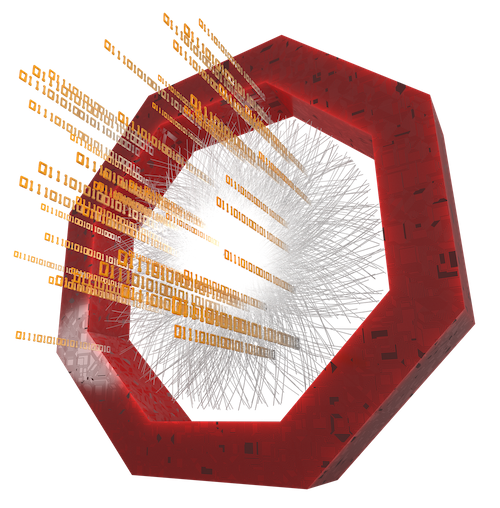List of available tutorials
This is a list of tutorials with less explanations. All code file can be found in the ALICEO2 code repository.
Source: compatibleBCs.cxx
Executable: o2-analysistutorial-compatible-bcs
Executable: o2-analysistutorial-compatible-bcs
The most probable BC associated to a collision is the one closest in time to the collision time, which is determined from the tracks forming the collision vertex. Within the uncertainty of the collision time there might howvere be more than on BC. This tutorial shows how to find all BC which are within the uncertainty range of the collision time.
Source: configurableObjects.cxx, configurableCut.cxx, configurableCut.h, configurableCut.json
Executable: o2-analysistutorial-configurable-objects
Executable: o2-analysistutorial-configurable-objects
Configurables are handy because their values can be set on the command line. The tutorial demonstrates the usage of such configurables.
Source: conditionalExpressions.cxx
Executable: o2-analysistutorial-conditional-expressions
Executable: o2-analysistutorial-conditional-expressions
Configurables can also be used in Filters.
Source: extendedColumns.cxx
Executable: o2-analysistutorial-extended-columns
Executable: o2-analysistutorial-extended-columns
Expression column are declared with a recipe to compute its values. The column is automatically computed when added to an existing table with the soa::Extend operator.
Source: dynamicColumns.cxx
Executable: o2-analysistutorial-dynamic-columns
Executable: o2-analysistutorial-dynamic-columns
Dynamic columns are declared with a recipe to compute its values. When attached to an existing table with the soa::Attach operator the column is automatically filled.
Source: efficiencyGlobal.cxx
Executable: o2-analysistutorial-efficiency-global
Executable: o2-analysistutorial-efficiency-global
In this tutorial an object which has previously been saved to the CCDB, is retrieved from the CCDB and is used for the construction of an efficiency histogram.
Source: efficiencyPerRun.cxx
Executable: o2-analysistutorial-efficiency-per-run
Executable: o2-analysistutorial-efficiency-per-run
Similar as the previous tutorial but here an object is retrieved from the CCDB for a specific time.
Source: fullTrackIteration.cxx
Executable: o2-analysistutorial-track-iteration
Executable: o2-analysistutorial-track-iteration
An example showing how to loop over the entries of joined tables.
Source: histogramsFullTracks.cxx
Executable: o2-analysistutorial-full-tracks
Executable: o2-analysistutorial-full-tracks
There is a number of predefined joins of tables (see the list of defined joins and iterators).
This example shows how to use aod::FullTracks which is a join of Tracks, TracksCov, and TracksExtra.
Source: histogramTrackSelection.cxx
Executable: o2-analysistutorial-track-selection
Executable: o2-analysistutorial-track-selection
In this tutorial the information contained in table TrackSelection is
exploited to retrieve tracks of a given type. In order to fill TrackSelection the task
o2-analysis-trackselection needs to be run.
o2-analysis-trackselection --aod-file AO2D.root | o2-analysistutorial-track-selection
o2-analysis-trackselection --aod-file AO2D.root | o2-analysistutorial-track-selection
Source: jetAnalysis.cxx
Executable: o2-analysistutorial-jet-analysis
Executable: o2-analysistutorial-jet-analysis
The JetAnalysis tasks subscribed to the tables Jet and JetConstituents which are created with the jet-finder executable o2-analysis-jetfinder.
Source: multiplicityEventTrackSelection.cxx
Executable: o2-analysistutorial-event-track-selection
Executable: o2-analysistutorial-event-track-selection
Example task generating a multiplicity distribution of collisions which pass the INT7 selection and tracks which pass the "isGlobalTrack" selection. Needs to run with event and track selection:
o2-analysis-timestamp | o2-analysis-event-selection | o2-analysis-trackextension | o2-analysis-trackselection | o2-analysistutorial-multiplicity-event-track-selection
o2-analysis-timestamp | o2-analysis-event-selection | o2-analysis-trackextension | o2-analysis-trackselection | o2-analysistutorial-multiplicity-event-track-selection
Source: muonIteration.cxx
Executable: o2-analysistutorial-muon-iteration
Executable: o2-analysistutorial-muon-iteration
This tutorial shows how to use tables MatchedBCCollisionsExclusive and MatchedBCCollisionsSparse to access the Muons belonging to a given collision.
Source: schemaEvolution.cxx
Executable: o2-analysistutorial-schema-evolution
Executable: o2-analysistutorial-schema-evolution
This example shows how schema evolution of tables can be implemented. Here two tables are defined which only differ by one column. It is shown how an example task can use a template, and can be instantiated to work on both.
Source: tracksCombinations.cxx
Executable: o2-analysistutorial-tracks-combinations
Executable: o2-analysistutorial-tracks-combinations
Use a hash to sort tracks into a 2D histogram. The hash is used to create pairs of tracks from the same hash bin with function selfCombinations.
Source: weakDecayIteration.cxx
Executable: o2-analysistutorial-weak-decay-iteration
Executable: o2-analysistutorial-weak-decay-iteration
Shows how to access V0 and cascade information.
Source: ZDCVZeroIteration.cxx
Executable: o2-analysistutorial-zdc-vzero-iteration
Executable: o2-analysistutorial-zdc-vzero-iteration
This tutorial shows how to use tables CollisionMatchedRun2Sparse and Run2MatchedExclusive to access ZDC and Fv0 information from Run2 data.
